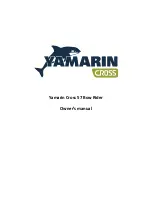
BASIC RULES OF THE ROAD
2-1
RULES OF THE ROAD
Operation of your boat must be in accordance with the rules and regulations governing the waterway on which it
is used. Just as there are rules that apply when you are driving on streets and highways, there are waterway
rules that apply when you are operating your boat. These rules are used internationally, and are also enforced
by the United States Coast Guard and local agencies. You should be aware of these rules, and follow them
whenever you encounter another vessel on the water.
Several sets of rules prevail according to geographic location, but are all basically the same as the International
Rules of the Road. The rules presented here in this Owner’s/Operator’s Manual are condensed, and have been
provided for your convenience only. Consult your local U.S. Coast Guard Auxiliary or Department of Motor
Vehicles for a complete set of rules governing the waters in which you will be operating your boat.
Steering and Sailing Rules
Whenever two vessels on the water meet one another, one vessel has the right-of-way; it is called the “stand-
on” vessel. The vessel that does not have the right-of-way is called the “give-way” or “burdened” vessel. These
rules determine which vessel has the right-of-way, and what each vessel should do.
Section 2_2008.qxd:Section 2_horiz.qxd 7/31/07 5:19 PM Page 2-1
















































